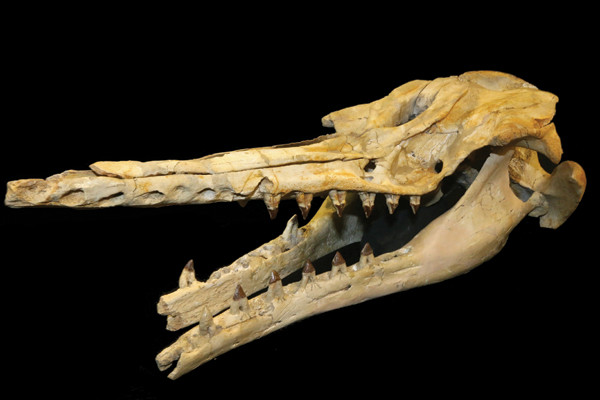
by Mary Caperton Morton Monday, July 21, 2014

The skull of the 28-million-year-old Cotylocara macei. Its anatomy and density variation indicate that this early toothed whale used echolocation to find its prey. Credit: James Carew and Mitchell Colgan.
Echolocation is a distinctive feature of toothed whales, but little is known about how and when this complex behavior and its underlying anatomy evolved, Jonathan Geisler of the New York Institute of Technology College of Osteopathic Medicine and colleagues wrote in Nature. To navigate and communicate, toothed whales emit high-frequency vocalizations in the nasal passages just below the blowhole. As the sound waves bounce off objects and echo back to the whale, they are modulated through the animal’s air sinuses and the melon, a mass of fatty tissue at the forehead, producing an “image” of the seascape.
The new find, discovered in South Carolina, exhibits several features suggestive of a rudimentary form of echolocation, including cranial asymmetry, a broad upper jaw and a dense and downturned rostrum. An accompanying phylogenetic analysis points to an early emergence in the Oligocene, soon after toothed whales diverged from the ancestors of baleen whales.
© 2008-2021. All rights reserved. Any copying, redistribution or retransmission of any of the contents of this service without the expressed written permission of the American Geosciences Institute is expressly prohibited. Click here for all copyright requests.